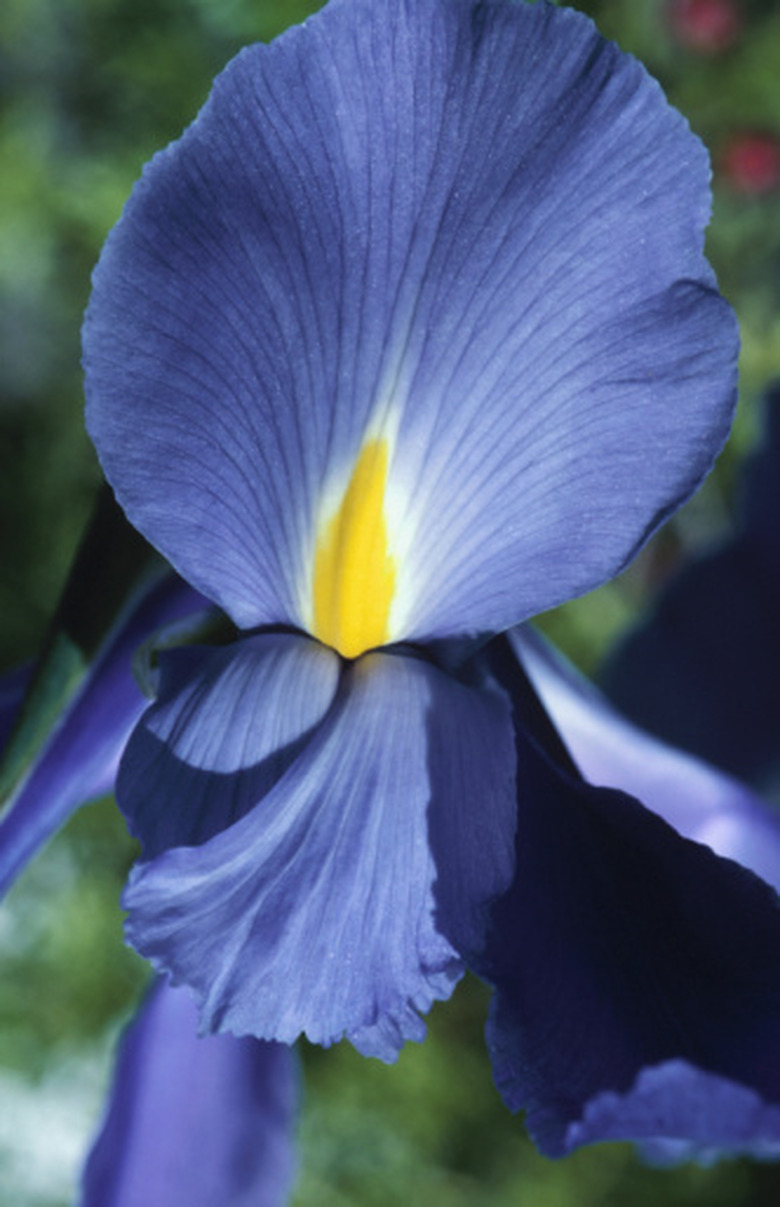Why Didn't My Iris Bloom This Year?
Iris (Iris spp.) is a popular plant grown in gardens and home landscapes prized for its distinctly formed blooms that come in a variety of colors. Irises are easy to grow and require little care to produce year after year. They come in thousands of varieties for both early and late blooming. If your iris didn't bloom this year, it might be time to re-examine your care techniques and the type of problems that sometimes trouble iris plants.
About Iris
Irises are generally divided into "bearded" and "beardless" types that refer to the presence or absence of drooping sepals that are actually called "falls" that grow on the flower. The true petals of the iris are upright. Irises also come in dwarf varieties.
Iris Care
Irises grow from an underground stem called a rhizome or corm. The best time to plant iris is from mid-July to early September for good root establishment before the winter months. Irises require well-draining soil and full sun exposure for a minimum of six hours each day. Bearded irises perform well in soil pH of 6.0 to 7.5. Beardless irises prefer slightly more acidic soil than bearded varieties, in the range of 5.5 to 6. 5. Irrigate plants to keep the soil moist but not wet, and do not mulch plants. An annual application of 5-10-10 fertilizer just after blooming is sufficient. Healthy irises will bloom regardless of fertilizing, but it will add nutrients to deficient soils. Weed carefully to prevent competition for water and nutrients from weed plants. Divide the iris plants after bloom time when they get too crowded. Overcrowding can cause poor blooming. Spread mulch over the plants to protect from winter cold, but remove the mulch in early spring. Remove the flowers after blooming, but leave the foliage to manufacture carbohydrates for next year's bloom.
Iris Bloom Times
Gardeners can plan for successively blooming of iris from early April to mid-June by planting different varieties. Bearded varieties tend to bloom earlier than beardless types. Siberian irises will bloom at midseason in May. Spuria irises extend the blooming season a bit later into June.
Problems With Flowering
Irises may have blooming problems due to a number of conditions. Planting the rhizomes too deep can deter blooming. Planting them in a location with insufficient direct sunlight can also affect blooming ability. You may need to trim neighboring trees and bushes to admit more light or transplant the iris corms to a sunnier area. Thrip or aphid infestations can damage new buds and prevent blooming. Damage to the foliage can also cause bloom problems. Transplanting can also have a detrimental effect on blooming, and you may have to wait another year for the plant to resume flowering.
